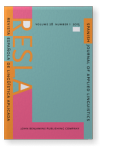Vol. 28:1 (2015) ► pp.97–117
Vol. 28:1 (2015) ► pp.97–117
Conceptual complexity in metaphorical resemblance operations revisited
The present article is concerned with the analysis of so-called metaphoric resemblance operations. Our corpus of animal metaphors, as representative of resemblance metaphors, reveals that there are complex cognitive operations other than simple one-correspondence mappings that are necessary to understand the interpretation process of the selected expressions (which include metaphor and simile). We have identified a strong underlying situational component in many of the examples under scrutiny, which requires the metonymic expansion of the metaphoric source. Additionally, metaphoric amalgams (understood as the combination of the conceptual material from two or more metaphors) and high-level metonymy in interaction with low-level metaphor are also essential for the analysis of animal metaphors.
